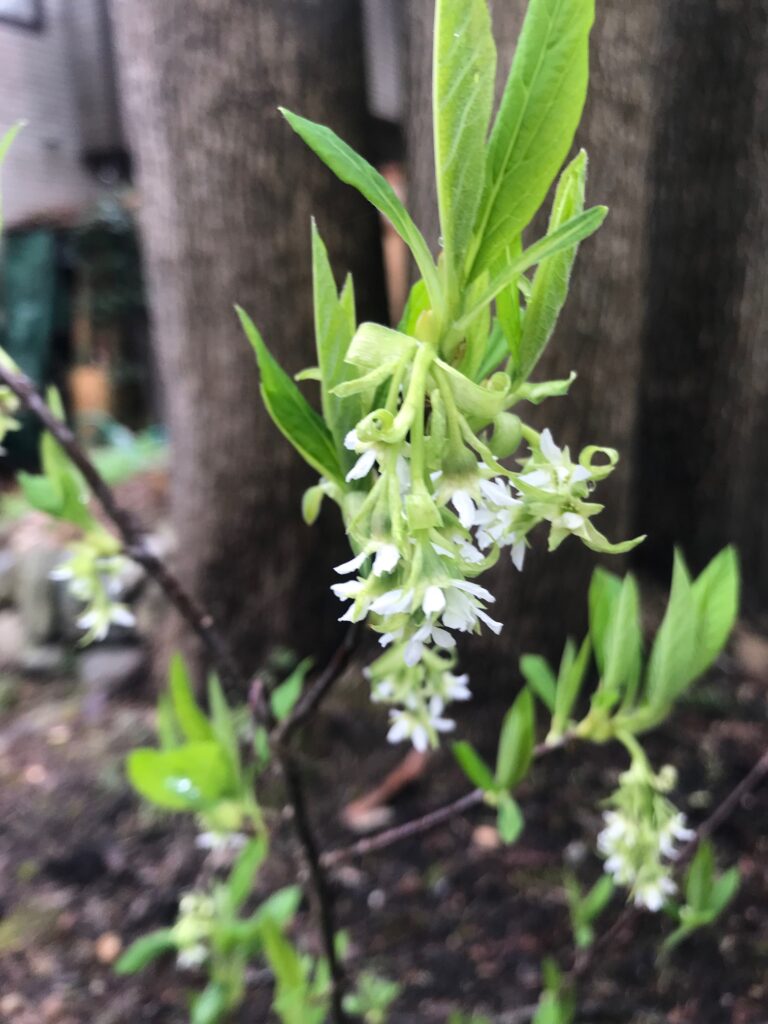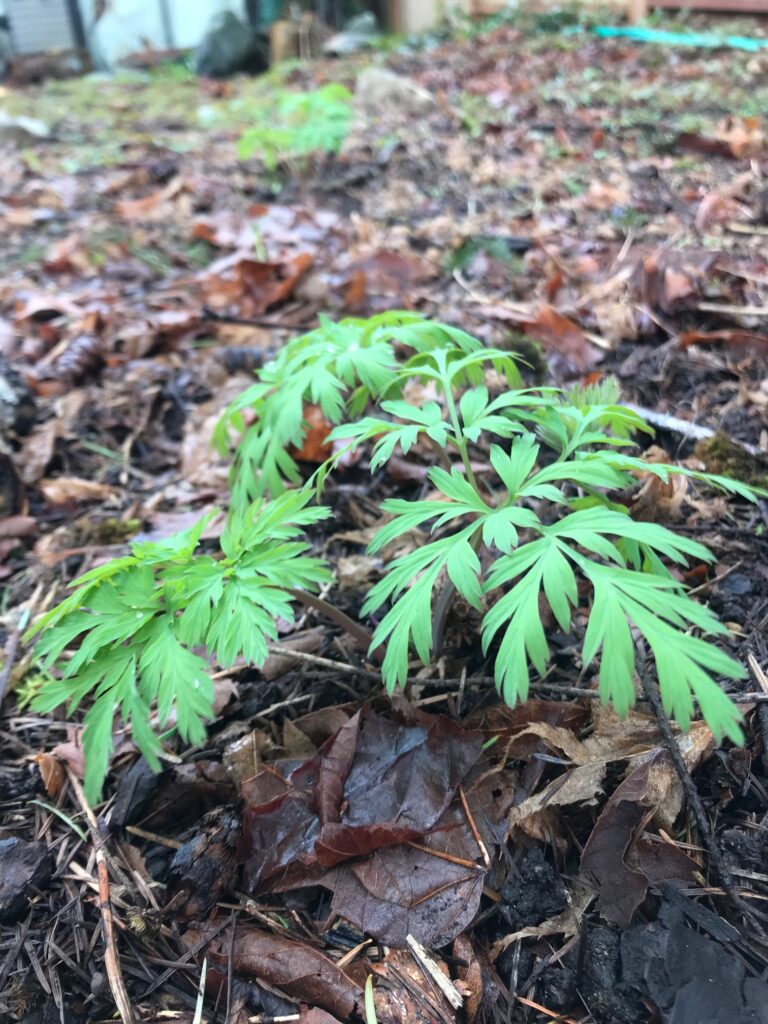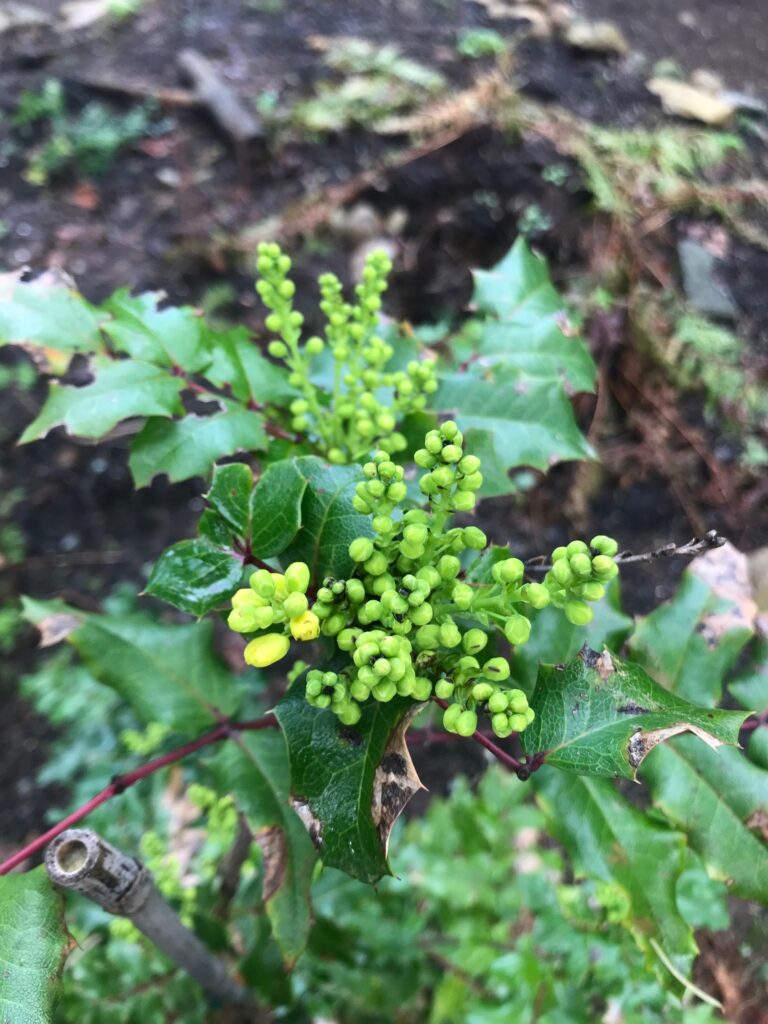Today, Sunday March 20, 2022, is the first day of Spring. So, I thought I would celebrate by sharing with you some photos taken along the Red Alder Trail, in our Douglas Fir Teaching garden.

The first native shrub to flower on the trail is the lovely Indigenous Plum or Osoberry. It has loose, drooping clusters of white flowers in March-April. Later, in June, it will produce small dark blue plums. The plums are edible, but not the sweetest and mostly filled with a pit.

The fiddleheads of the bracken fern are the first ferns to emerge on the red alder trail. This deciduous fern dies back in the winter and reemerges in the spring. The bracken fern fiddleheads are edible and can be fried with oil and lemon for a delicious treat.

The Pacific bleeding heart is a native perennial flower. Like the bracken fern, it dies off in the winter only to reemerging in the spring. These bright new green leaves just grew within the past 2 weeks. We had planted many pacific bleeding heart plants in the Douglas Fir Teaching Garden last October. Despite our particularly snowy and cold winter, we were happy to see that they all survived.

The tall Oregon grape is an native evergreen shrub, sometimes mistaken for English holly. Unlike holly, which has alternate leaves, the Oregon grape has opposite leaves. In addition, the Oregon grape produces clusters of edible, grape-like berries, as opposed to the poisonous red berries of the English holly. In the spring, as you see, the Oregon grape flowers begin to bloom, in beautiful yellow clusters.
Great information, well presented. I can tell you are a teacher!
Comments are closed.